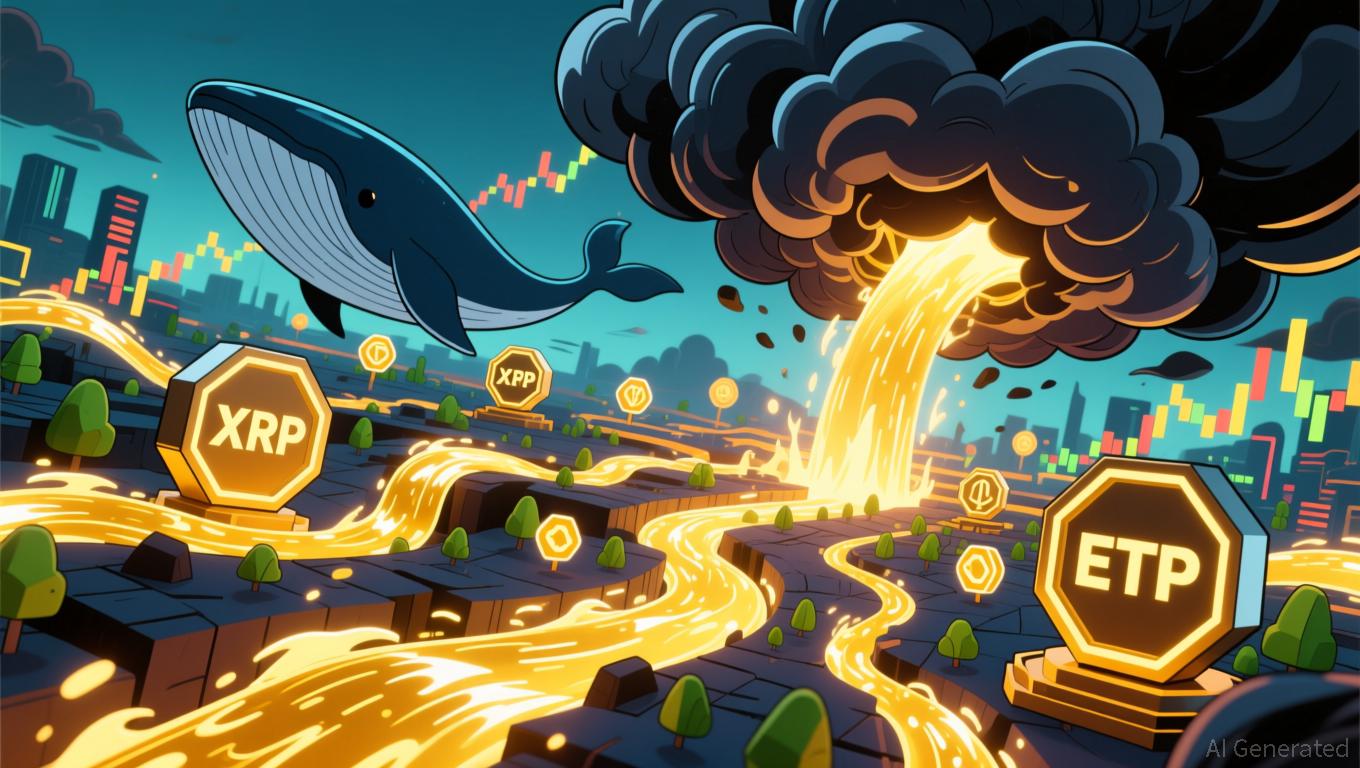News>
XRP News Update: Institutional Interest Soars as XRP ETFs Lead to Tightening Supply
Bitget-RWA2025/11/26 15:44
By: Bitget-RWA
- XRP's surge in institutional demand, driven by new spot ETFs like Franklin Templeton's XRPZ and Grayscale's GXRP , has triggered a $628M inflow and price rebound to $2.08. - Regulatory clarity post-Ripple-SEC settlement confirmed XRP's non-security status, while ETF structures reduce supply and amplify demand through creation cycles. - Despite record inflows, XRP's volatility persists, dipping below $2 after whale sales and highlighting structural fragility with 41.5% of supply in loss. - Analysts debate
The
XRP
market is experiencing a significant transformation as institutional interest intensifies, fueled by the introduction of several spot XRP ETFs and a surge of inflows that have surpassed initial forecasts. Franklin Templeton's XRPZ and Grayscale's GXRP
made their debut on November 24, 2025, while Bitwise's offering led early trading with $13.9 million in volume
, highlighting strong demand for regulated investment vehicles. These ETF launches coincided with XRP's price climbing back to $2.08
, marking a 1.52% increase over 24 hours as buyers returned after the token tested crucial support zones. Investment into XRP ETFs has
surged, with daily net inflows reaching $164 million
, and total assets now above $628 million, indicating a notable change in institutional strategies. This uptick is credited to greater regulatory certainty
following the conclusion of Ripple's lengthy legal dispute with the U.S. Securities and Exchange Commission, which clarified that XRP traded on public platforms is not considered a security. Experts point out that the ETF model—requiring actual XRP purchases during creation—reduces circulating supply and increases market pressure, fueling a cycle of rising demand. Even with strong inflows, XRP's price has
shown continued volatility, dropping below $2
in early December as large holders sold 200 million tokens within two days of the ETF rollout. 
stressed that the full effects
of these ETFs may not be seen until 2026, when ongoing demand could help stabilize prices. The discussion around holding XRP directly versus through ETFs has grown more heated. Analysts note that ETFs provide access via brokerages and offer liquidity, but investors do not own the underlying asset and must pay management fees. Direct ownership of XRP, on the other hand, offers more utility and potentially lower long-term expenses, but comes with challenges related to custody and taxes
as detailed in recent market reports
. This contrast mirrors the evolving preferences of investors as the market develops. Institutional enthusiasm is also being boosted by new offerings such as CME's spot-quoted XRP and
Solana
(SOL) futures, which are scheduled to launch in December 2025. These contracts are designed to reflect live market prices with reduced margin requirements, appealing to firms looking for broader crypto exposure according to industry analysts
. This trend fits within a larger movement toward institutional participation, as XRP ETFs drew $179.6 million in new investments just this week
. Looking forward, market experts
anticipate a crucial year for XRP in 2026
, depending on regulatory consistency and the uptake of Ripple’s expanding international payment solutions. Some believe the token could reach $3–$5 by year’s end if adoption accelerates, though risks such as global regulatory shifts and competition from other blockchain platforms remain as highlighted in industry forecasts
. Disclaimer: The content of this article solely reflects the author's opinion and does not represent the platform in any capacity. This article is not intended to serve as a reference for making investment decisions.
Lock now!
You may also like
Crypto prices
MoreBecome a trader now?A welcome pack worth 6200 USDT for new users!
Sign up now